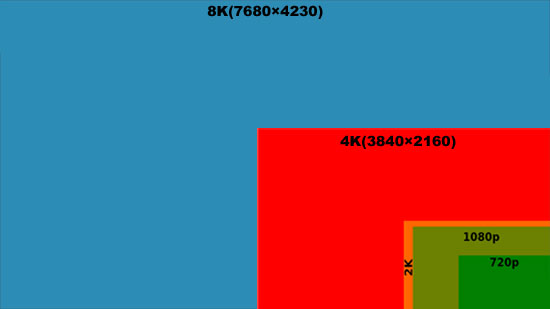4K Ultra HD
What is Ultra HD
Ultra HD (also known as Ultra High Definition/Super Hi-Vision/Ultra HDTV/UH/UHDTV/4K/8K), is a video format conceptualized by the Japanese public broadcasting network, NHK. Currently there are 2 forms of Ultra HD, 4K and 8K, both have an aspect ratio of 16:9.

4K Ultra HD
4K Ultra HD (2160p) refers to a Progressive high definition video signal or display with 2160 horizontal lines and an Aspect ratio of 16:9 (1.78:1) with a resolution of 3840 × 2160 (8.3 megapixels), which is also often called either QuadHD in reference to having four times as many Pixels as pixels in Full HD format (1080p). It may also be referred to as 4K2K (or 4K for short) in reference to having approximately 4000 vertical lines and 2000 horizontal lines.
8K Ultra HD
8K Ultra HD (4320p) produces an astonishing 7,680 × 4,320 pixel resolution (33.2 megapixels), which is roughly the equivalent of an IMAX film or 16 times the pixel resolution of Full HD (1080p).
Defference between 4K and Ultra HD?
4K and Ultra HD often refers to the same thing but have some difference sometimes. We quoted explanation from IGN.com "4K is a standard for professional video production and cinema, while UHD is a standard for consumer displays and broadcast television. Both 4K and UHD refer to high pixel density video, but there is a slight difference: a 4K image (4096x2160) has 256 more lines of vertical resolution than UHD (3840x2160), and as a result, has a different native aspect ratio.
 Glossary
Glossary